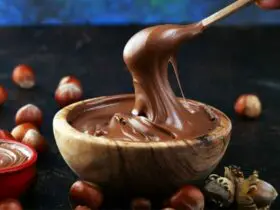Chicken is a staple in a lot of households. There are so many options, and it pairs well with countless side dishes. If you’re feeling like your chicken meals have gone stale (no pun intended), we’d like to introduce you to stuffed chicken.
While it can look and sound intimidating, stuffed chicken recipes range from beginner-friendly to advanced, making them a great option for any and all cooks! But what is the best way to stuff a chicken breast (Spoilers: there are two methods and they’re both great!), and how do you actually go about stuffing ingredients into a chicken breast? Keep reading.
Table of Contents
Do You Stuff a Chicken Before Cooking?
Due to the potential for bacterial growth, you should absolutely not stuff a chicken ahead of time! This rule applies whether you are stuffing a chicken breast or a whole chicken. Instead, you should wait and stuff the chicken immediately before cooking it.
Cook Coaching: When cooking chicken, it is important to cook it until it reaches the safe minimum internal temperature of 165°F. To measure, insert a food thermometer into the thickest part of the chicken.
How Do You Prepare Chicken Breast for Stuffing?
Before you can stuff your chicken breast, you’ll need to prep it. There are a number of different ways to prepare a boneless skinless chicken breast for stuffing, but here are two of the most common methods.
- Butterfly and Flatten: Butterflying a chicken breast involves using a sharp knife and cutting the chicken breast horizontally—though you should leave one side intact to create a spine—and splitting it open like you would a book. From there, you can use a meat mallet (or any tool with a hard, flat surface) to pound the chicken until it’s flat and even. Roulades, or dishes that require you to roll the chicken, typically call for this method. If you need more tips on butterflying, check out our article on flattening chicken breasts.
- Create Pockets: This technique tends to be somewhat easier, especially for novice cooks. To create a pocket, simply take your sharp knife and cut a slit into the breast. When cutting the slit, you’ll want to cut it deep enough so that you can insert stuffing, but not so deep as to create a hole on the other side. Depending upon the recipe, you may be making slits vertically (on the top of the breast) or horizontally (along one side of the breast).
Once you’ve prepared your chicken and you’re ready to begin stuffing it, simply pat it dry with a clean paper towel.
How Do You Stuff Chicken Breasts?
There’s no one way to stuff chicken breasts. It all depends on if you’re making a stuffed split chicken breast (by creating pockets) or if you’re making a rolled stuffed chicken breast in the
No matter what stuffed chicken recipe you’re attempting, we’ve got you covered. Below you’ll find instructions for how to stuff chicken for both kinds of recipes. Plus, we’re adding in some links to tasty baked stuffed chicken breast recipes if you need a little culinary inspiration!
Stuffing Split Chicken Breasts
Step 1: Prepare the chicken breast by creating horizontal or vertical pockets, depending upon what your recipe calls for. This recipe for mushroom stuffed chicken breast asks you to create a horizontal pocket on the side of the breast.
Step 2: Season the chicken breast with salt and pepper.
Step 3: Insert the stuffing. There are a few ways to do this. With a horizontal pocket, you could use your hands or a spoon to insert your ingredients into the breast. For smaller pockets, you might find it easier to pipe in the stuffing. Stuff the chicken breast until it feels full.
Cook Coaching: Piping is a common technique used in baking to pipe in ingredients into dough (like a filled doughnut) or frost a cake. You can also use it here to fill the pocket of a chicken breast. To create a DIY piping bag, scoop your ingredients into a plastic bag, seal it, cut one of the corners of the bag, and squeeze.
Step 4: Seal the pocket to secure the stuffing while you cook the chicken breast. Often, you can simply insert 3-4 toothpicks to close off the pocket. How do you stuff chicken breasts without toothpicks? Uncooked spaghetti pasta works great in a pinch—simply trim the pasta and use it as you would toothpicks.
Step 5: Cook! Follow your recipe’s instructions for properly cooking your stuffed split chicken breast.
Looking for more stuffed chicken breasts? Our Ruth Chris Stuffed Chicken or our Chicken Chesapeake recipes are sure to hit the spot.
Stuffing Rolled Chicken Breasts
Step 1: Prepare the chicken breast by butterflying and flattening your chicken breast. This recipe for spinach and cheese stuffed chicken breast asks you to flatten your chicken breast to ½”, for example.
Step 2: Season the chicken breast with salt and pepper.
Step 3: Spread a thin layer of stuffing over the entire piece of chicken breast. You can do this using a knife, spoon, or your hands. In this recipe, you’ll also place a piece of swiss cheese on top of the stuffing mixture. Other recipes might call for you to place a piece of ham, for example, on top of the filling.
Step 4: Once the stuffing is in place, roll the chicken breast around the stuffing. Your roll should be tight, but not so tight that all the stuffing is pushed out.
Step 5: Follow any additional recipe instructions. For example, some rolled chicken breasts could be wrapped in bacon (YUM!).
Step 6: Secure your rolls using toothpicks, dry spaghetti, or cooking twine.
Step 7: Cook! Follow your recipe’s instructions for properly cooking your stuffed rolled chicken breast.
Eager to try out something a little more complex? Meat lovers adore our Turducken recipe!
Ready to Start Cooking? Explore Recipe Self
At Recipe Self, we’re on a mission to help you feel more confident and comfortable exploring all types of recipes in your own kitchen. From breakfasts through dinners—and everything in between—we’re sharing recipes that’ll wow your family and friends. But don’t just stop with chicken! Enhance your skills with recipes for crab stuffed steak, stuffed calamari, and even stuffed onion.
Once you’re ready to start looking for other types of cuisine, explore our whole website for inspiration—and get cooking!


































Leave a Reply